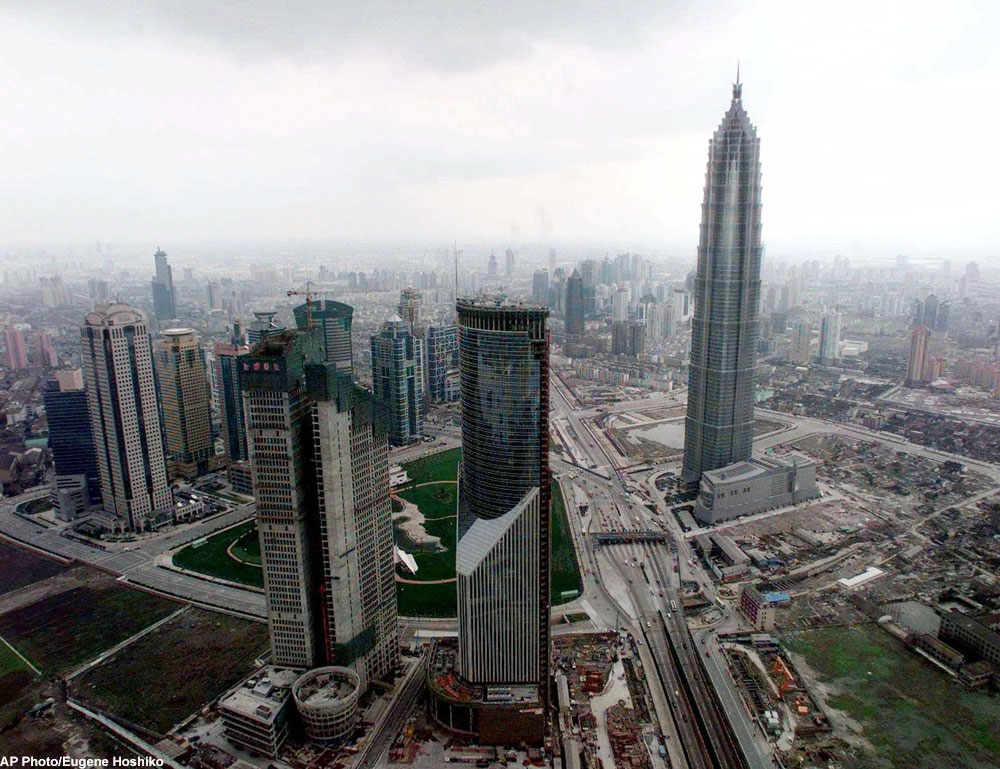
China Must Avoid Overreliance on Cars (Op-Ed)

Chris Busch is director of research and Veery Maxwell is communications specialist, both at Energy Innovation: Policy and Technology. They contributed this article to LiveScience's Expert Voices: Op-Ed & Insights.
In total, China's cities are growing in population by more than 15 million people each year.
Urbanization is an important part of China's strategy to rebalance its economy away from export-oriented manufacturing and toward higher-value economic activities, services and domestic consumption.
For China's cities to serve that strategy, they must become more livable. China must not build cities around cars, but rather around people. And this needs to happen fast, at a scale that matches China's incredible pace of urbanization.
Though the United States pioneered the car-dependent suburb, mounting evidence suggests that development pattern is falling out of favor. A new analysis by Michael Sivak of the University of Michigan finds that motorization in the United States (as measured by car ownership per person) might have passed its peak. The number of miles driven per person declined in 2012 for the fifth straight year — the first time that has happened since World War II.
Central, walkable urban areas have emerged as the most desirable U.S. real estate. People — especially younger people — want access to goods, services, entertainment and culture, and they recognize that being centrally located provides the best access to these amenities. In Los Angeles, which was arguably the U.S. epicenter of car culture, a comprehensive public transit system is emerging.
To avoid building cities that are overly reliant on cars, China should move quickly to contain the outward expansion of its cities. China's urban population grew 120 percent between 1980 and 2010, but the land area covered by cities expanded by 300 percent.
Sign up for the Live Science daily newsletter now
Get the world’s most fascinating discoveries delivered straight to your inbox.
When cities consume land faster than the population grows, it indicates worsening urban sprawl. China must contain the geographic spread of its cities through a host of planning activities that reduce car dependency, including boundaries on growth and development of good public transit.
Successful cities will offer people transportation options, including nearby access to goods and services, mixed-use development and pedestrian-friendly streets. But people want mobility to travel beyond where they can walk or bike, and to do this effectively in large urban areas requires superior transit — transit that is comfortable, clean and convenient.
Bus Rapid Transit (BRT) provides a cost-effective transit solution. China has already built the largest BRT system in Asia, in Guangzhou. It moves nearly 1 million people daily at speeds equal to that of an underground system and was built in nine months.
In addition to being as efficient at moving people as an underground metro (and faster to build), the capital costs of BRT are much lower. That is important, given the tightening of credit to support Chinese infrastructure projects: The central government recently turned down $6.5 trillion in proposed local spending, and interest rates are rising over concerns about debt levels.
China is forging steel and pouring concrete in incredible quantities to support the growth of its cities. Avoiding entrenched car dependency is crucial.
New, more efficient designs have never been able to break through conventional technology's dominance. To illustrate this point, consider the following example.
Today, we still use the QWERTY keyboard. It was designed to avoid a particular problem posed by early typewriters: When certain combinations of keys were struck quickly, the type bars often jammed. To avoid this, the QWERTY layout put those keys most likely to be hit in rapid succession on opposite sides.
Despite the irrelevance of this rationale today, the old technology still rules. Technological lock-in happens, and China should learn from the United States' experience and avoid building its cities' transportation systems around cars.
It's always easier to build cities right the first time.
More lessons from China's transportation growth are available in Chris Busch's most recent Op-Ed, Superblocks: Why China Must Embrace Mass Transit (Op-Ed)
The views expressed are those of the author and do not necessarily reflect the views of the publisher. This article was originally published on LiveScience.com.









